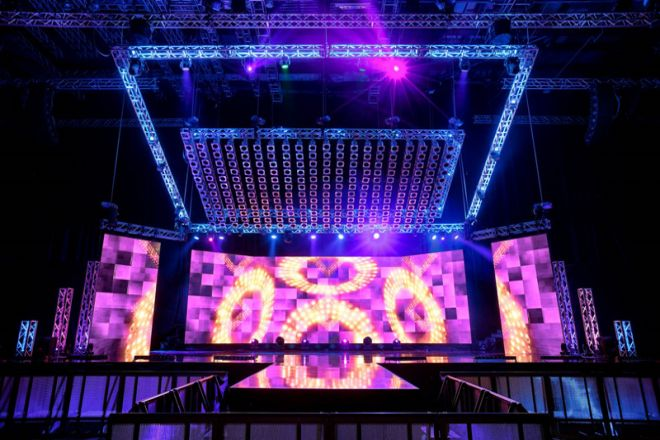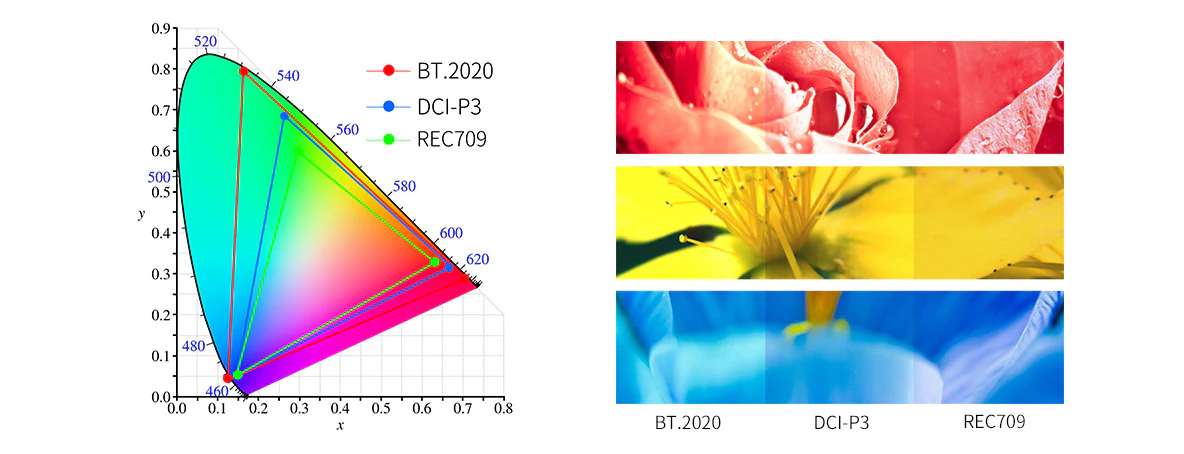LED walls have become essential components in modern live production — from concerts and theater stages to corporate presentations and broadcasts. They offer bright, dynamic visuals and immersive backgrounds, but they also introduce a persistent challenge: color mismatch between LED walls and stage lighting.
Without proper color alignment, your beautifully rendered media may appear washed out or overly saturated when viewed alongside lighting effects. Even worse, the same content can look entirely different to cameras versus the live audience. To ensure your visuals remain cohesive, both on screen and in the room, it’s crucial to adjust your color profiles to match LED walls effectively.
This article explores how to harmonize lighting systems with LED wall output through careful color profiling, calibration, and real-world adjustment strategies — no product recommendations, just pure technical insight.
Why Color Mismatch Happens
Color discrepancies arise because LED walls and lighting fixtures don’t “see” color the same way. Several factors contribute to this:
Different Color Gamuts: LED walls often use sRGB, DCI-P3, or Rec.709 standards, while stage lighting systems operate with RGB, RGBW, or RGBWA+UV blends — not necessarily mapped to any video standard.
Intensity Disparity: LED walls can be extremely bright and pixel-dense, overwhelming even high-powered stage lights if not matched in levels.
White Balance and Color Temperature: LED video often leans toward 6500K (daylight) white, whereas lighting fixtures may default to 3200K or 5600K, creating unwanted warmth or coolness.
Viewing Angle and Optics: Walls and lights may look different depending on the audience’s or camera’s position, introducing angle-dependent shifts.

Understanding Color Profiles
A color profile is a digital interpretation of how a device (or system) perceives and reproduces color. To match lighting with LED walls, you must understand the following common profiles:
sRGB: The most widely used for web and basic media; limited gamut.
Rec.709: Standard for HDTV video production; ideal reference for broadcast color matching.
DCI-P3: Broader color range used in digital cinema; some high-end LED panels support this.
Custom Profiles: Often created during calibration to match lighting + camera response.
Lighting consoles and video processors increasingly offer color profile emulation or transformation tools to help bridge the gap. But understanding what you're targeting is step one.

Step-by-Step: Aligning Lighting with LED Walls
1. Identify the LED Wall Profile
Confirm what color space your LED processor is outputting (sRGB, Rec.709, etc.). This often depends on the media server or scaling hardware used.
2. Establish a Color Reference
Use a calibrated monitor or video signal waveform analyzer to check what your media files should look like under correct settings. This will be your visual reference point.
3. Match White Point First
Start by aligning white temperature:
Set LED wall to a fixed white balance (e.g., 5600K)
Match lighting fixtures' output via console presets or DMX-controlled color mixing
Avoid mixing warm and cool whites unless deliberately stylistic
4. Calibrate with Color Meters and Cameras
Use a spectrometer or color meter to measure stage light output versus LED screen emission. Camera LUTs can also help normalize visuals across devices.
5. Use Soft Color Transitions
Hard cuts or high-saturation cues often exaggerate mismatches. Instead, use smooth fades and slightly desaturated hues to better blend with LED backdrops.
6. Adjust via Media Server or Console
Use your lighting console’s virtual color gel library, HSV encoders, or custom macros to simulate color spaces more closely aligned with the LED wall. Media servers may allow live color correction or LUT (Look-Up Table) adjustments to video content.
Special Considerations for Photography and Broadcast
If the event is being photographed or live-streamed:
Calibrate both the camera and LED wall together before setting lighting.
Avoid UV or highly saturated greens — they distort easily under camera sensors.
Consider creating a dual-color profile approach: one optimized for the camera, another for the in-room audience.
Live Adaptation Techniques
When full calibration isn’t possible due to time or equipment limitations, consider the following practical hacks:
Color Wash Harmonization: Pick a dominant color wash for both LED and lights (e.g., cyan, magenta) to create an intentionally unified look.
Shadow Control: Reduce harsh shadows using side fill or bounce light to prevent LED wall from becoming the only source of contrast.
Visual Buffer Zones: Place neutral scenic elements (e.g., scrims, light haze) between the wall and performers to help the eye blend both layers.
Summary: Balance Is Better Than Precision
Perfect alignment of color profiles may be unrealistic in fast-paced production environments. Instead, aim for visible harmony — meaning that, to both camera and eye, the LED wall and lighting don’t contradict each other in tone, warmth, or intensity.
Focusing on white point balance, color desaturation, and smooth transitions can often do more than brute-force calibration. A collaborative approach between lighting operators, video engineers, and content designers is key.
READ MORE:
- Sourcing from Multiple Regions: Diversifying Risk
- Using Solar-Assist Charging for Battery Lighting Systems
- Multi-Spectral Fixtures and Their Impact on Stage Design
- Lighting for Small Conference and Workshop Rooms
- Fixtures Designed for Long-Distance Throw Applications
- Bad Lighting Killing Your Event Photos? These Lights Are Camera-Ready
- Can’t Find the Right Light for Multi-Purpose Venues? These Cover It All





Blue Sea Lighting is an enterprise with rich experience in the integration of industry and trade in stage lighting and stage special effects related equipment. Its products include moving head lights, par lights, wall washer lights, logo gobo projector lights, power distributor, stage effects such as electronic fireworks machines, snow machines, smoke bubble machines, and related accessories such as light clamps.
Quick Links
For more questions subscribe to our email








